5 Biome City

The 5-Biome City
Nelson Mandela Bay represents a large percentage of South Africa's biological diversity in that it is a meeting point for 5 of the 7 South African Biomes, namely the Thicket, Grassland, Nama-Karoo, Fynbos and Forest Biomes. The area also boast a significant amount of endemic species i.e. species that are only found here and nowhere else in the world. Such a concentration of biomes, particularly within a city, is unparallel in the world and results in an extraordinary diversity of landscapes, plants and animals.
A biome is a broad classification of vegetation according to the kinds of plants that occur in the area, which is influenced by factors such as soil and climate. A biome is not usually found only in one part of the country. Depending on the climate and features of the landscape, a particular biome can be distributed in patches, like forest in the kloofs of mountains all over the country.
A number of municipal nature reserves have been included in, and can be visited along the
“Outward Bound Route” of the city. A mosaic of these 5 Biomes could be experienced in these reserves. The Outward Bound Route is an Eco-Outdoor Adventure and Sports Route incorporating Walking Trails and Wildlife experiences. The aim of this route is to spread tourism to similar attractions along the route, leading to increased foot traffic and related benefits to these sites.
THICKET BIOME
The thicket biome is found largely in the Eastern Cape, but is highly fragmented and found mostly in the river valleys. It is characterized by a sparse to dense, spiny, evergreen shrub vegetation, with a tree component of varying proportions.
The thicket biome represents an area of transition, and contains elements of seven biomes. Most of the plant endemics of the Albany centre of endemism are components of the thicket biome. The thicket is thought to contain the most species-rich formations of woody plants in South Africa.
GRASSLAND BIOME
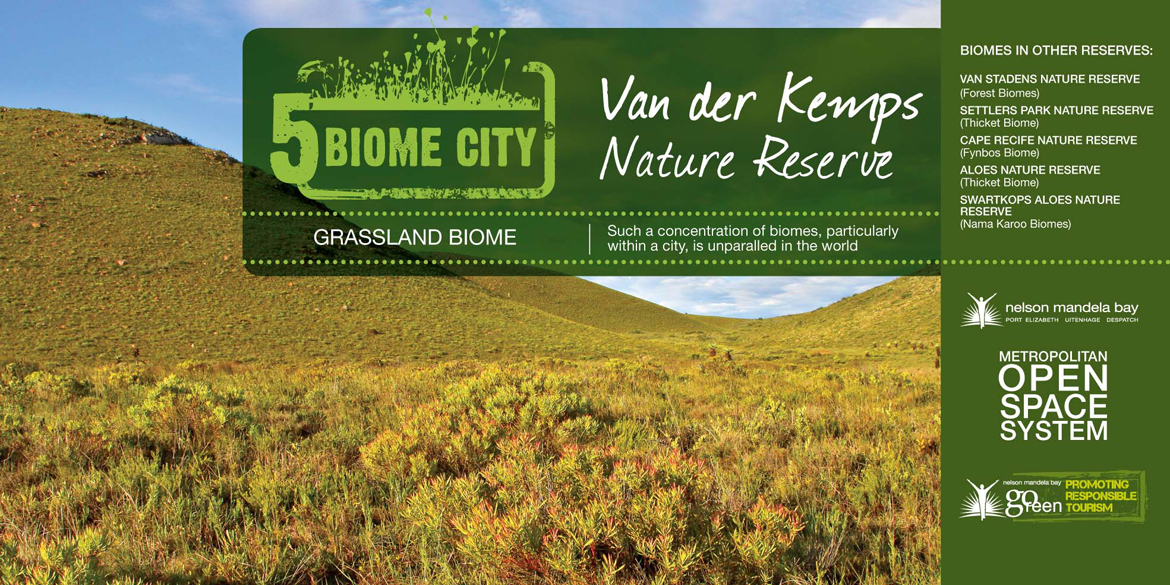
The grasslands biome is characterized by summer rainfall, mostly in the form of thunderstorms, and frosts in winter. It is dominated by different species of grasses, with very few bushes or trees.
For most of the year only grasses can be seen, but in spring a variety of flowers sprout from underground bulbs.
Fire plays an important role in the ecology of this system. Grasslands are often characterized by the presence of many wetlands, upon which economic development is dependant.
The grasslands biome can be viewed at the
Van Der Kemps Kloof Nature Reserve.
FOREST BIOME
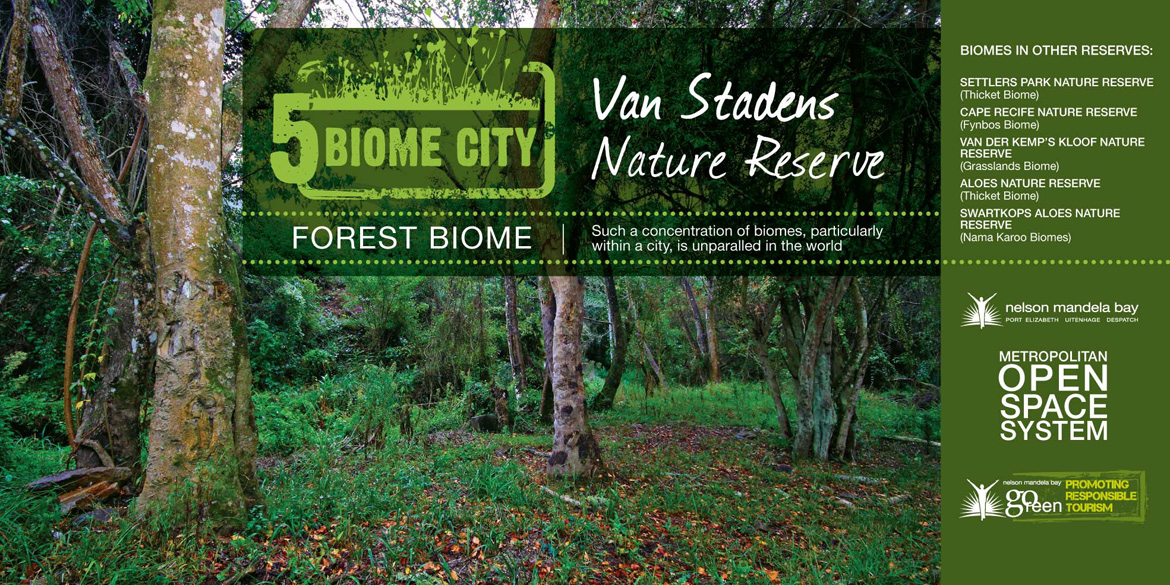
The forest biome is dominated by tall trees that form a roof above the forest floor, making it dark on the ground below. It is found in areas of high rainfall and in kloofs in the mountains, where it is wetter than surrounding areas.
The only large patches of forest that remain in South Africa are around Knysna and Tsitsikamma on the Cape south coast, but little patches are scattered throughout the country.
The forest biome can be viewed at the
Van Stadens Wild Flower Reserve.
NAMA KAROO BIOME
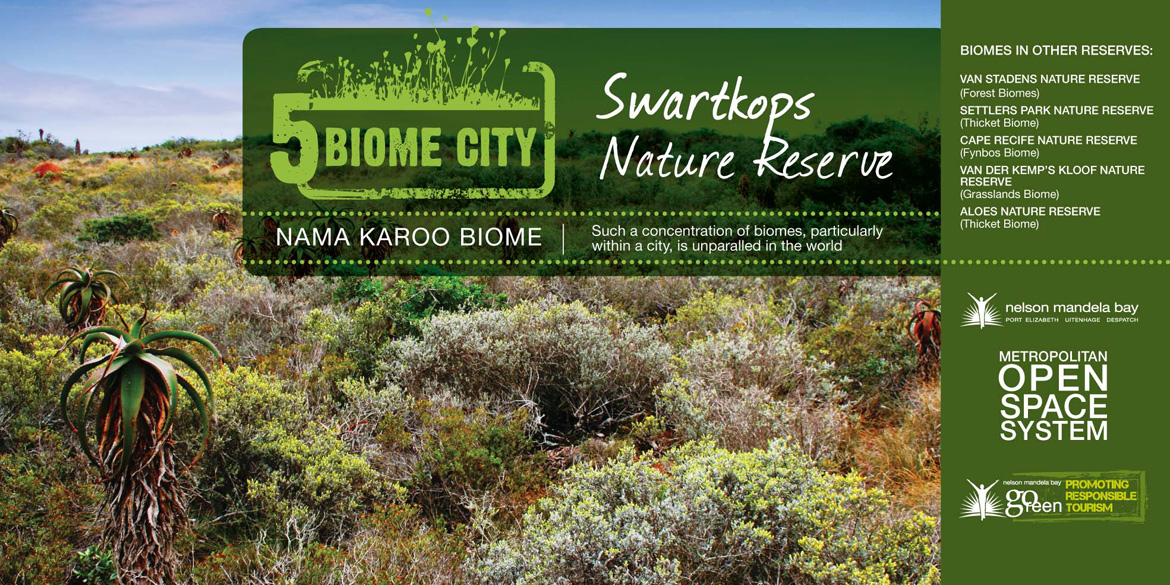
Nama Karoo occurs in areas with very low rainfall and soils are often very rich, but plant growth is limited by the dry climate. The dominant vegetation is a grassy, dwarf shrubland. Small trees occur along drainage lines and rocky hillsides, while plains are dominated by low shrubs, intermixed with grasses, succulents, geophytes and annual forbs. Temperature ranges can be extreme and rainfall is highly unpredictable.
The Nama Karoo biome can be viewed at the
Swartkops Aloe Reserve.
FYNBOS BIOME
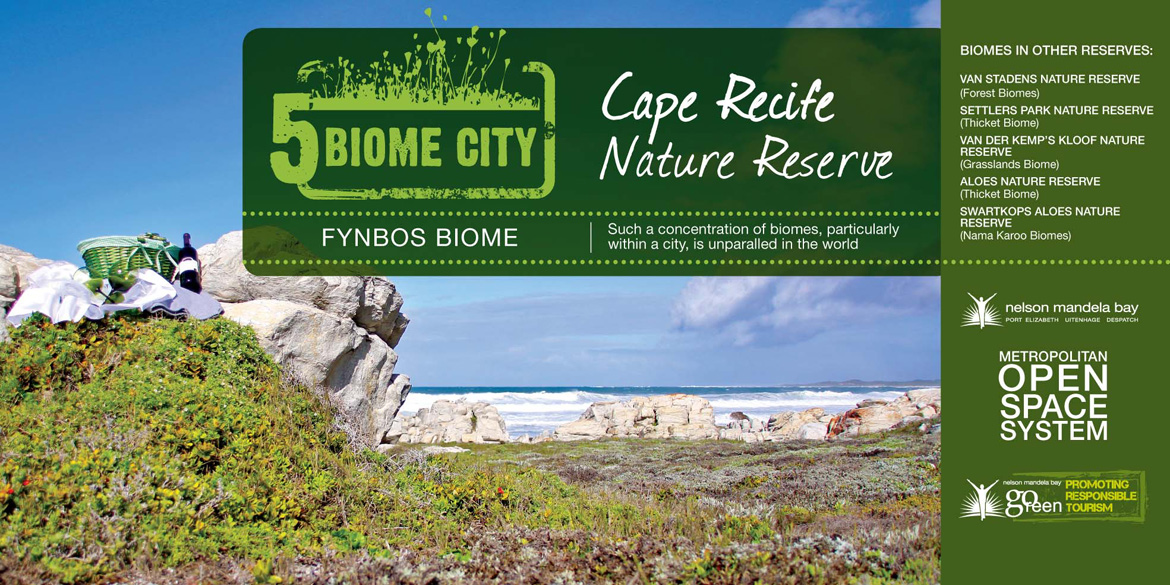
The Cape Floral Kingdom (CFK) is one of the earth's six floral kingdoms, and is found entirely within the borders of South Africa. It is mostly located in the Western Cape, with Port Elizabeth representing the south east corner of the CFK.
The fynbos biome is characterized by winter rainfall. The vegetation comprises Medium-height bushes, mostly with very small leaves, sometimes with reed-like plants called restios and taller protea bushes.
Most types of fynbos are found on sandy soils, mainly on mountains and along the coast. Fire plays an important role in fynbos, and many fynbos species rely on fires every few years in order for seeds buried in the soil to grow, and to renew the growth of old, woody plants.
The fynbos biome can be viewed at the Cape Recife Nature Reserve.
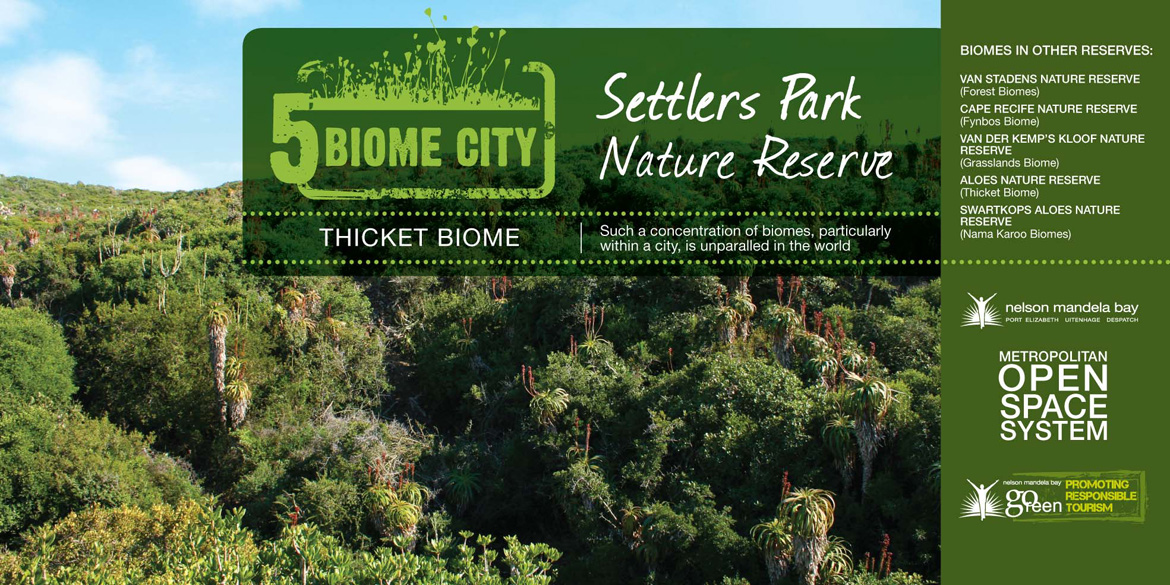




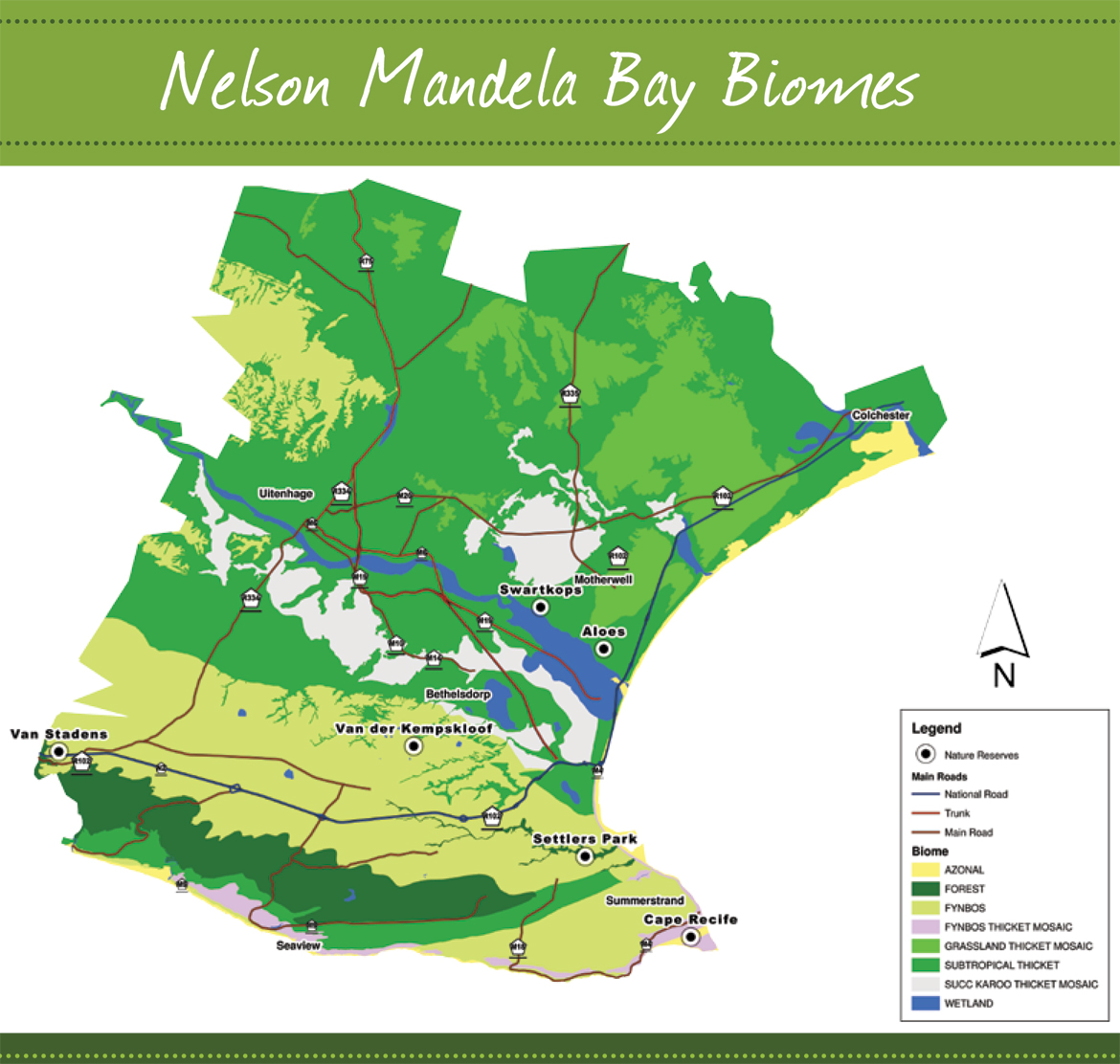




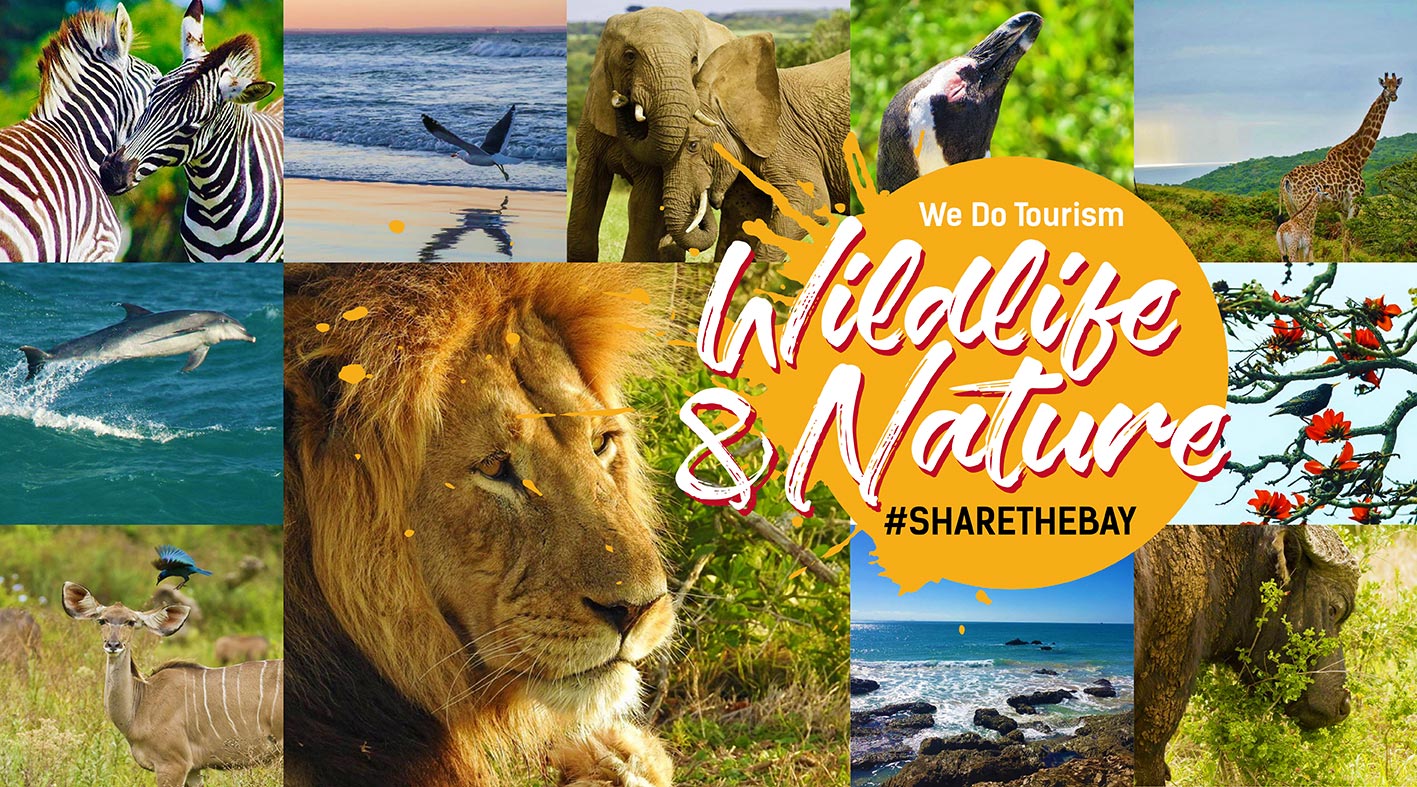

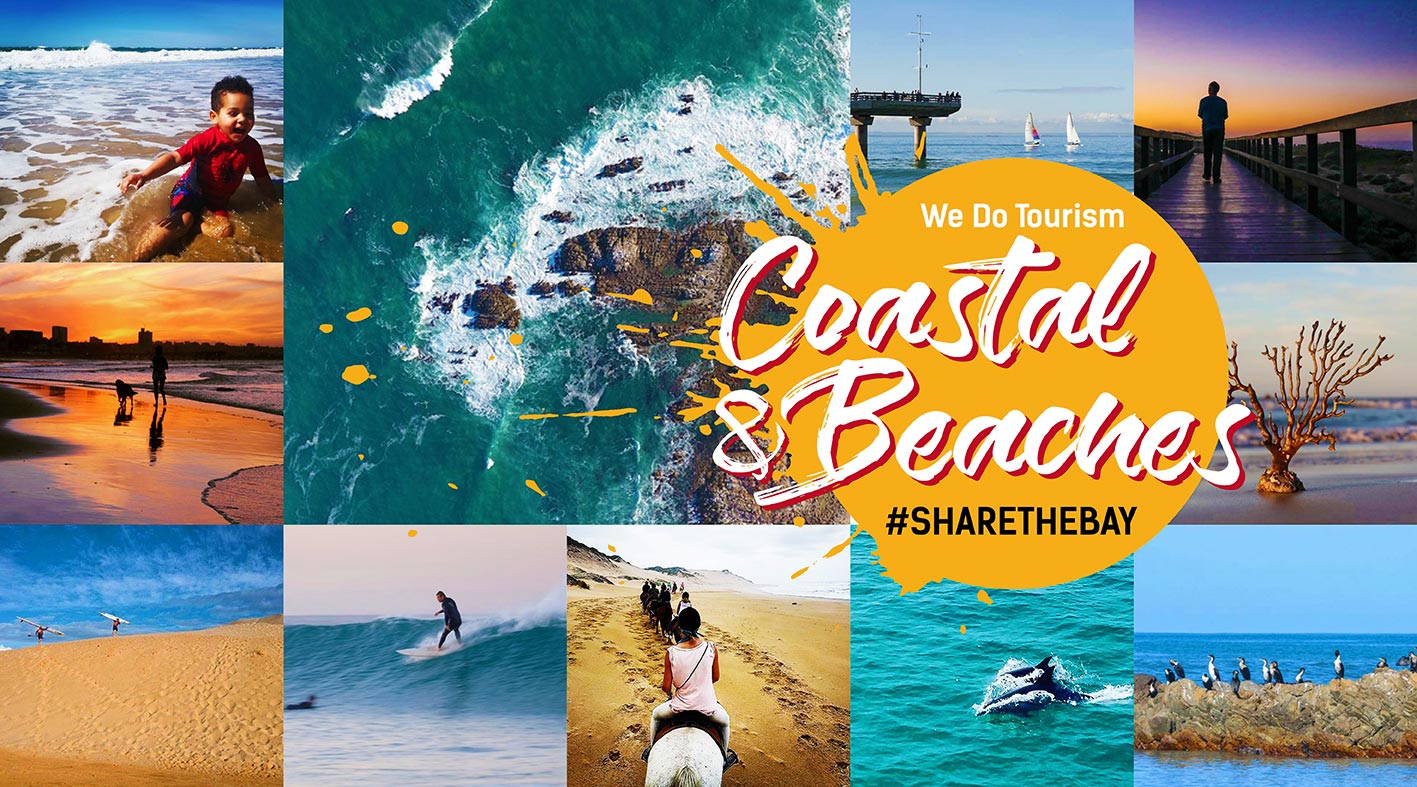















 Please wait!
Please wait!